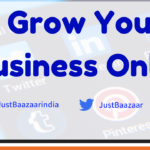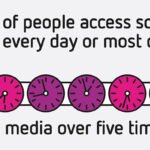
An effective landing page is a critical component of any successful digital marketing campaign. It serves as the focal point where potential customers land after clicking on ads, emails, or search results. A well-designed landing page can significantly boost conversions, helping you achieve your marketing goals. This blog will explore the key elements of an effective landing page, best practices for design and content, and strategies for optimizing conversions.
What is a Landing Page?
A landing page is a standalone web page specifically designed to receive and convert traffic from various marketing sources. Unlike a homepage, which provides general information about a business, a landing page has a single focus—encouraging visitors to take a specific action, such as signing up for a newsletter, making a purchase, or registering for a webinar.
Why are Landing Pages Important?
- Increases Conversion Rates
A well-optimized landing page can lead to higher conversion rates by focusing on a specific goal and eliminating distractions. - Targeted Messaging
Landing pages allow for tailored messaging that resonates with the audience’s needs, interests, and motivations. - Improves Ad Performance
Using dedicated landing pages for ad campaigns enhances the user experience and increases the likelihood of clicks and conversions. - Data Collection
Landing pages are effective for capturing lead information, enabling businesses to build their email lists and nurture prospects. - A/B Testing Opportunities
Landing pages offer an excellent opportunity for A/B testing, allowing marketers to experiment with different elements and optimize for better results.
Listicle: Top 7 Elements of an Effective Landing Page
- Compelling Headline
The headline should grab attention and clearly convey the value proposition. It should address the visitors’ pain points and encourage them to keep reading. - Engaging Subheadline
A strong subheadline supports the main headline, providing additional context and reinforcing the offer. It should complement the headline and entice visitors to take action. - Clear Call to Action (CTA)
The CTA is the focal point of the landing page. Use action-oriented language (e.g., “Get Started,” “Sign Up Now”) and ensure it stands out visually to encourage clicks. - Concise and Persuasive Copy
The content on the landing page should be concise, persuasive, and focused on the benefits of the offer. Highlight what sets your product or service apart from the competition. - Visual Elements
Incorporate high-quality images, videos, or graphics that enhance the message and draw attention. Visuals can help convey emotions and illustrate the offer effectively. - Social Proof
Include testimonials, reviews, or case studies to build trust and credibility. Social proof reassures visitors that others have had positive experiences with your product or service. - Mobile Optimization
Ensure that your landing page is mobile-friendly, as a significant portion of users access content via mobile devices. Optimize for fast loading times and responsive design.
Feature Snippet: The Key to Effective Landing Pages
An effective landing page is essential for maximizing conversions in digital marketing campaigns. By focusing on compelling headlines, clear CTAs, and persuasive content, marketers can create landing pages that resonate with their audience and drive desired actions.
Table: Key Components of a Landing Page
| Element | Description | Importance |
|---|---|---|
| Headline | Captures attention and conveys the offer | First impression; essential for engagement |
| Subheadline | Provides additional context | Supports the main message |
| Call to Action (CTA) | Encourages users to take action | Central focus of the landing page |
| Content | Explains the offer and its benefits | Persuades visitors to convert |
| Visuals | Enhances the message and engagement | Draws attention and communicates emotion |
| Social Proof | Builds trust and credibility | Encourages conversion through reassurance |
| Mobile Optimization | Ensures accessibility on all devices | Improves user experience and engagement |
Best Practices for Designing an Effective Landing Page
- Keep it Simple
Avoid clutter and unnecessary elements. A clean and straightforward design helps focus attention on the primary goal. - Limit Navigation Options
Minimize distractions by reducing or eliminating navigation links. This keeps visitors focused on the landing page’s purpose. - Use Color Wisely
Utilize colors strategically to highlight important elements, such as the CTA. Ensure that the color scheme aligns with your brand identity. - Test Different Variations
Regularly conduct A/B testing to compare different versions of your landing page. Test variations of headlines, CTAs, images, and layouts to determine what resonates best with your audience. - Include a Thank You Page
After a successful conversion, redirect users to a thank you page that confirms their action. This page can also provide additional information, such as related offers or next steps. - Integrate Analytics
Use analytics tools to track landing page performance. Monitor metrics like conversion rates, bounce rates, and time on page to assess effectiveness and make improvements. - Optimize for SEO
Ensure that your landing page is optimized for search engines by incorporating relevant keywords, meta descriptions, and alt text for images. This can help attract organic traffic.
Common Mistakes to Avoid When Creating a Landing Page
- Overloading with Information
Too much information can overwhelm visitors. Focus on delivering concise and relevant content that clearly communicates the offer. - Weak CTAs
Vague or poorly designed CTAs can reduce conversion rates. Ensure your CTA is strong, action-oriented, and prominently placed. - Neglecting Mobile Users
Failing to optimize for mobile devices can result in lost conversions. Ensure your landing page is responsive and user-friendly on all devices. - Ignoring Page Load Speed
Slow-loading pages can lead to high bounce rates. Optimize images and streamline code to ensure fast loading times. - Lack of Testing
Skipping A/B testing can hinder your ability to optimize the landing page effectively. Regular testing helps identify the best-performing elements.
Measuring the Success of Your Landing Page
- Conversion Rate: Track the percentage of visitors who complete the desired action (e.g., sign-ups, purchases).
- Bounce Rate: Monitor the percentage of visitors who leave the landing page without interacting. A high bounce rate may indicate issues with content or design.
- Average Time on Page: Analyze how long visitors stay on the landing page. Longer times can suggest that the content is engaging.
- Source of Traffic: Assess where visitors are coming from to determine which marketing channels are most effective in driving traffic to the landing page.
The Future of Landing Page Optimization
As digital marketing continues to evolve, landing page optimization will remain a key focus. Here are some trends to watch:
- Personalization: Increasingly, landing pages will incorporate personalized content based on user behavior and preferences, improving engagement and conversions.
- Interactive Elements: Expect to see more interactive features, such as quizzes and calculators, integrated into landing pages to enhance user experience.
- AI-Driven Insights: The use of artificial intelligence will provide marketers with valuable insights for optimizing landing page performance and automating testing processes.
Conclusion
Creating an effective landing page is essential for the success of your marketing campaigns. By focusing on key elements, implementing best practices, and continuously optimizing your approach, you can significantly improve your conversion rates and drive better results. Invest the time and effort needed to craft landing pages that resonate with your audience, and watch as your campaigns flourish.









